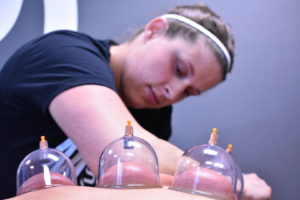1 – KEEP YOUR PROTEIN INTAKE HIGH!
There’s nothing worse than dealing with the stress of traveling AND trying to keep your diet on point. There are two types of travelers: those that travel hard and eat hard, or those that travel hard and forget to eat while they’re traveling. Maybe you’ve even been a combination of both. However, one of the best ways to preserve your muscle gains when your routine is interrupted is to maintain a high protein intake.
Research has shown that the best protein intake for protecting against lean muscle mass loss in the general public is AT LEAST 1.2-1.6 g/kg/day (0.54-0.7 g/lb body weight). If you’re resistance training, your protein needs are even higher, with recommendations at 1.6-2.2 g/kg/day (0.7-1.0 g/lb) to maximize muscular adaptations.
These numbers are especially important to hit if you tend forget to eat while traveling so that you don’t lose your muscle mass. On the other hand, if you’re an overeater, keeping your protein high will keep you more satiated during the day.
If you’re an overeater, keeping your protein high will keep you more satiated during the day.
2 – BURN OUT YOUR LEGS WITH BODYWEIGHT SQUATS AND LUNGES.
Hitting a few leg workouts can go a long way toward maintaining your fitness when you’re away from the gym. Fortunately, there is one workout style that can very quickly burn out your legs without any weights: a Tabata workout.
This is a 4 minute workout where you choose two movements and alternate between them for 20 seconds of work followed by 10 seconds of rest.
Example:
Every minute for 4 minutes:
– 20 Squats
– 10 Rest
– 20 Jumping lunges
– 10 Rest
You can mix and match any two exercises and perform as many iterations as you want based on the amount of time you have available!
Check out some more minimal equipment workout examples in the video below!
3 – TRAVEL WITH MINI RESISTANCE BANDS FOR UPPER AND LOWER BODY WORKOUTS ON THE FLY!
Mini resistance bands are incredibly portable tools for maintaining your fitness gains. They fold up to the size of a wallet, won’t set off airline metal detectors, and are versatile enough to create a full body workout! You can use mini band resistance for lower body and hip strengthening, core strengthening, and upper body strengthening.
Using tip #2, create a Tabata style workout with two of your favorite banded movements!
4 – USE BLOOD FLOW RESTRICTION TRAINING IF YOU DON’T HAVE ACCESS TO WEIGHTS!
We recently posted about how to safely and effectively use blood flow restriction training to maximize muscle growth. Given the limited access to fitness equipment that comes with traveling, this training tool has the potential to revolutionize your “save the gains” routine during travel. Blood flow restriction training requires only a compression band (think Voodoo Floss), tightened around either the upper arm or upper thigh to make any workout more difficult since the blood flow out of the area is slowed. All of a sudden, you’re pumping out curls with a can of corn while you get the same burn and growth stimulus as you would with 40 pound bicep curls.
Blood flow restriction training tool has the potential to revolutionize your “save the gains” routine during travel.
Check out the video below for our tips on BFR training.
5 – WORK ON YOUR MOBILITY DURING LAYOVERS OR ROAD TRIP STOPS!
The last way you can maintain or even enhance your fitness gains while traveling is to use the time off to work on your mobility. There’s nothing worse than being out of the gym for a week only to come back with tight hips, shoulders, and a stiff back from sitting for hours in a car or on a plane.
Sitting in the bottom of a squat or sinking into a deep lunge is always a great way to decrease feelings of stiffness through the legs and low back. You can also keep your upper back and chest or shoulders mobile after long periods of sitting by reaching your upper back over the top of a chair (airport chairs are great for this)!
Bottom Line: If you’re looking to maintain your fitness while traveling, keep your protein intake high, and get creative with your workouts so that your muscles are still getting some stimulation, even if you’re on the go!
As always, I hope this helps! If you have any questions or would like to read about certain topics, send us an email at TeamSP@SportsPerformancePT.com.
-Dr. Marissa Rescott, PT, DPT, CF-L1
For more tips on optimizing athletic performance FOLLOW US on:
- Instagram: http://www.instagram.com/SportsPerformancePT
- Facebook: http://www.facebook.com/SportsPerformancePT
- YouTube: http://www.youtube.com/c/SportsPerformancePT














